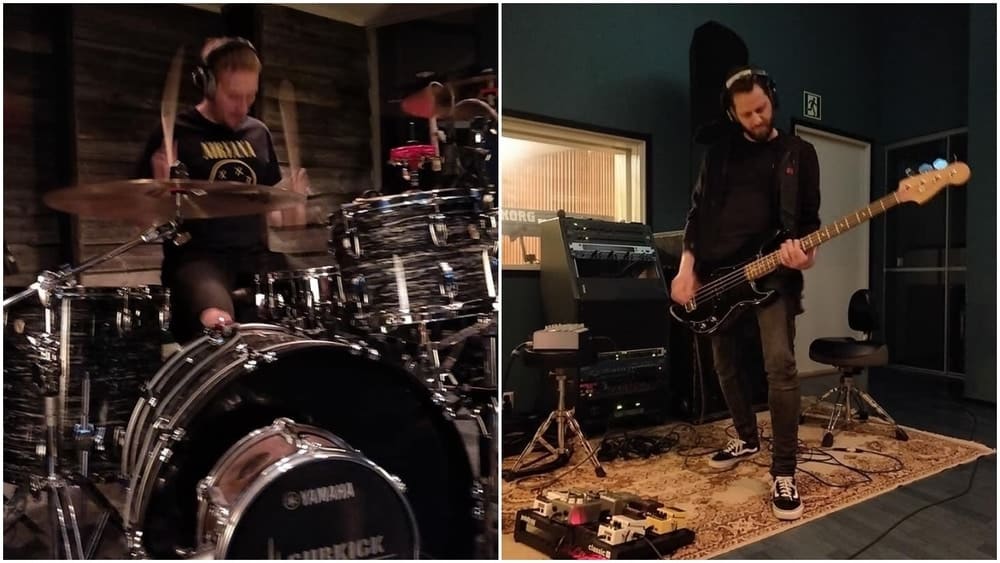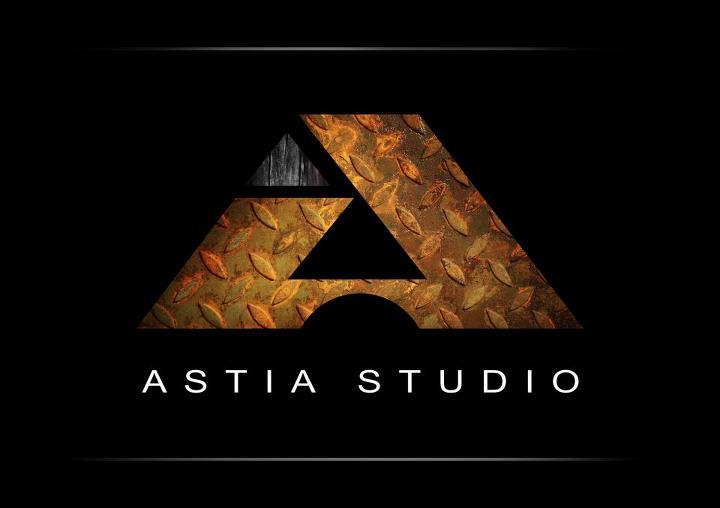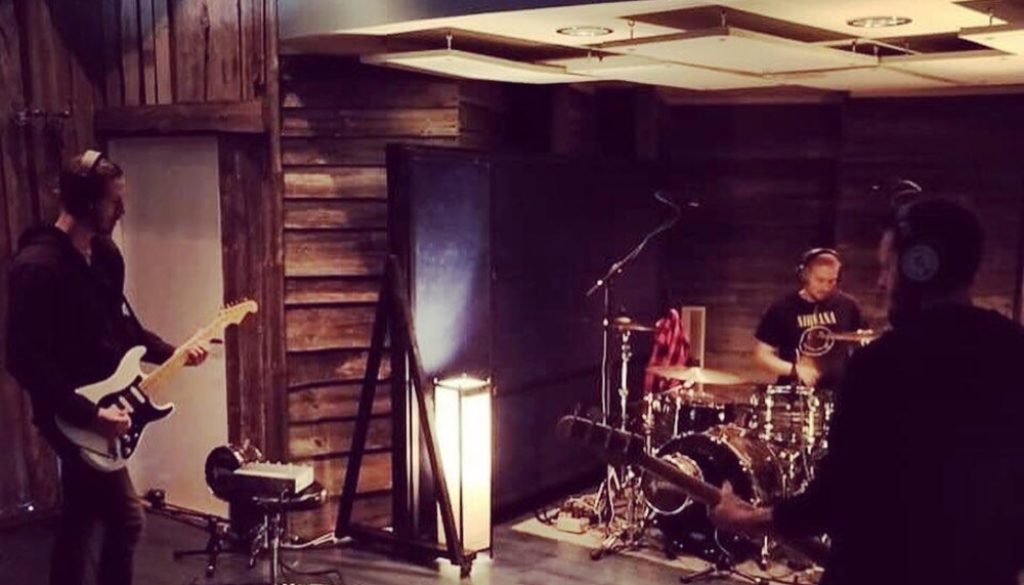“This Was Supposed To Be The Last Session For Us” – Case Study Monotonia
Was playing music once the biggest inspiration and the best way to spend your days too? But is music no longer making you feel this way? If you are frequently disappointed to the recording quality and about to call it quits, you definitely should read this blog post. “This was supposed to be the last session for us” – Case study Monotonia.
After the album we were in a hangover-like state and everything felt stagnant. We decided to record one more single and then either put the band on halt or call it quits.
-Monotonia
“This Was Supposed To Be The Last Session For Us”
– Case Study Monotonia
Finnish band Monotonia activated in 2013 and has released an EP and a debut album. We will now go through their latest Maailmanparantaja single session and how a positive tape recording experience changed their plans for the future.
The band reserved two days to record, mix and make mastering for a single. We set the date to a weekend at the beginning of October 2019.
We chose to record on tape to get as authentic and real sound as we hear it and to get closer to the favorite albums from our childhood that were all done on magnetic tape.
–Monotonia
The pre-production was easy as the band had a clear vision of the song and our production ideas immediately matched. They were looking for the 90’s style vivid rock sound that would emphasize their lineup. Nowadays it’s pretty rare for a trio to sound like a trio as the recording is often pretty far from the live sound.
After hearing the demo I suggested that we’d use my secret weapon; the barrel microphone on the verses and the big room tracks on the choruses. This would create a nice contrast between the parts. The band was excited about that too.
On the previous evening
Monotonia arrived from Helsinki on the previous evening before the session to Astia-studio to setup the gear. While getting acquainted we went through the ideas about both the sound and arrangement. They brought a friend along to shoot a video about the recording. It’s pretty common that due to the intensity of the session we end up forgetting to take any photos. So to have a dedicated person to take care of the documentation is a great idea.
Once the gear was setup and the drums in tune I miked them and tweaked the sound along with the headphone mixes. The 3.000 watt PA system in the drum room made the members smile big time. It helps to visualise themselves on stage instead of the studio room. This improves the emotion significantly and helps them to deliver better takes.
By the end of the evening we always make a test recording. This helps the band to understand how they sound when captured on tape. This time too the surprise was huge and the test take almost ended up being on the song. Eventually we decided to re-record the basic tracks after a goodnight sleep.
Once I locked the studio doors we went to the listening room upstairs for a demonstration about the huge difference between the analog and digital recording quality. The demonstration makes it easier to understand why the tape recording sounds much more vivid. The best part of the demonstration is usually the child-like enthusiasm that glows in the eyes of those who for the first time in years are touched by the music as deeply as in their teens. They seem to go back to when music first inspired them to start playing.

The first session day – recording the basic tracks
On Saturday morning during breakfast we also enjoyed a vinyl record. It was nice to see how this band too had noticed how organic food affects the health in a positive way.
In the studio we finetuned the drums and tweaked some of the sounds. We used a metronome just to get the starting tempo right. If several takes are needed, this helps to start on the same tempo. We captured the basic tracks with the whole band playing all at once as this improves the natural flow and live energy. After a couple of takes excellent basic tracks were done. The amazed band was happy to hear all the small nuances still present and they seemed pretty satisfied.
After comparing different bass guitars we ended up using the one that the previous recording engineers had unanimously rejected. It gave us a nicely boosted high end and after few takes the bass track was completed.
Monotonia guitars in stereo
Even though Monotonia is a trio, we’d be following the guitar map and recording several tracks of guitar. As the clean guitar was overlapping the distorted guitars, it needed a separate track. We recorded the solo on the rhythm guitar track and so both the rhythm and solo parts were doubled.
For the first guitar we used a Mesa head and an Ampeg cabinet. I had a Shure SM58 with the grill removed some 50 cm away from the cabinet as described on my How To Improve Guitar Sound pt 1 blog post. For the double track we switched both the guitar and amp head. We then doubled both tracks excluding the solo with the studio’s Marshall Super Lead mk2 head.
For the clean guitar we used the studio’s Fender Twin combo that most guitar players seem to prefer. There was no doubling so I captured it on two tracks using two microphones; a Shure SM57 and a Royer 121 ribbon mic. Yes, I rarely use the same model mics when recording a stereo guitar. The rules are meant to be broken.
When recording on the computer we examined the tracks through a magnifying glass to find the mistakes. With tape we concentrated on both the emotion and solid feel. This highlighted the playing in a different way and it emphasizes the small things even more. That is so great.
–Monotonia
By the end of the evening we recorded the lead vocals on 3-4 takes. There was a great emotion and energy that perfectly supported the text. This time too the vocal microphone was a Neumann U67 tube microphone from the 60’s. I recorded the signal through two channels of 1176 hardware compressors.
After completing the recording we listened to what we had accomplished to caught on tape a couple of times and went to the HC sauna. The Round of Honour took place and then it was time to enjoy more vinyl records upstairs. It took a good two hours and the unifying power of music was overwhelming.

The second session day – completing the recording
On Sunday morning we again enjoyed a vinyl record during breakfast. Once in the control room we checked the fruits of our labour from the day before and continued recording.
The Astia-studio drum room doesn’t sound great only on drums but also when recording choir parts. Ensiferum band mentioned during the One Man Army album demo session how they once recorded over 80 individual choir tracks. Yet, at Astia with just few tracks the choir sounded a lot bigger.
A part at the end of the song demanded a “woo-oo” choir so that’s what we did. All three members sang around an omnidirectional AKG C414 placed in the center of the drum room. We recorded two tracks and that was enough to make the choir part big.
The vocalist wanted to see if he could deliver even more emotional lead vocal take compared to yesterday. So I recorded another vocal track to compare. Eventually the take from the previous evening turned out to be the one as the emotion was just spot on. It’s good that we did the new take as we now know that the original couldn’t be any better
I deleted the optional vocal take and recorded one last guitar for the 2nd verse. Some years ago identical parts were a must. Now I think that the parts shouldn’t be an exact copy but boldly different from each other.
Mixing and mastering
In the afternoon we completed the recording and I started mixing. I always do my best to record everything as close to the mixed sound as possible. This makes mixing a lot faster and I need to do a lot less processing. Throughout the session we are kind of listening the mixed version and know exactly how the songs will turn out.
I ended up using parallel compression on the bass drum, snare, bass and some guitars along with lead vocals. As I already compress all that’s necessary during recording, the main channels had no compression during mixing.
When it comes to the vocal reverb I love the sound of our 50’s mono EMT-140 plate reverb. The lead vocals had also a touch of the Revox B77 1/4″ tape machine as a tape delay. On the big parts I added the 12-bit EMT/Franz 245 digital reverb from the late 70’s on the snare and toms to make them even bigger.
Once the balance was set I turned on the Trident Vector 432 mixing console‘s integrated System 4 VCA automation that allows to record both the volume and mute automation. I use it mainly to mute the unused tracks and sometimes to automate the lead vocals. I automated also the secret weapon mentioned in the beginning along with the big room tracks.
…we knew what we were getting, yet we got a lot more!
–Monotonia
How the tape session changed the plans for Monotonia
I invited the band to the control room to listen to the mix. While presenting the mix to them I simultaneously recorded it on stereo tape and there was no need for any changes. The band was totally loving it!
Do you know the feeling when the mix revision 7 or 11 is the accepted version? I remember it very well too. Once I made the transition to tape recording the bands approve the first mix version on every session and this time was no exception.
I was caught by surprise when the band told me they originally intended to make this their last recording session, but it actually turned out to be the very first! This was a new beginning for Monotonia. The tape session had restored the joy of music and once they returned home they intended to get turntables out of the storage. This is what music should be all about – a huge positive inspiration!
Astia-studio was all in all an Awesome experience! We gained back the joy of doing music and the vinyl-record-bug definitely bit us! Monotonia will proceed making new material and considers an acoustic approach on the old compositions.
–Monotonia

Case study Monotonia: Maailmanparantaja
Thank you for reading the case study about Monotonia: “This was supposed to be the last session for us but it turned out to be the first!”. It was a great pleasure to guide the band that was disappointed to digital recording to the so-called analog source. I was delighted to read their Facebook posts and emails about how the inspiration continued on at home too.
Maailmanparantaja single is soon out and we are very excited! Special thanks to Anssi for an awesome session and a weekend full of music!
–Monotonia
If this post was helpful, please share it on social media. This way you will help your friends to benefit from the information.
To experience as awesome session as Monotonia, click here. Thank you very much and all the very best!
Enjoy more case study posts from these Astia-studio sessions:
- “In Two Months We Learnt More Than During The Past 5-10 Years”
– Case Study Serpico - “From Now On This Is The Only Way Erävesi Will Make Recordings”
– Case Study Erävesi - Jarmo Nikku: “The Sound Felt Natural (After Quite Some Time)”
– Case Study Seniors Clearwater Revival
Astia-studio is a full analog recording studio located in eastern Finland with 25 years of experience. Bands and artists from all over the world including USA and the furthest corner of Russia, Vladivostok have arrived to us for tape recording sessions.
This is the song we worked on the Case Study session:



